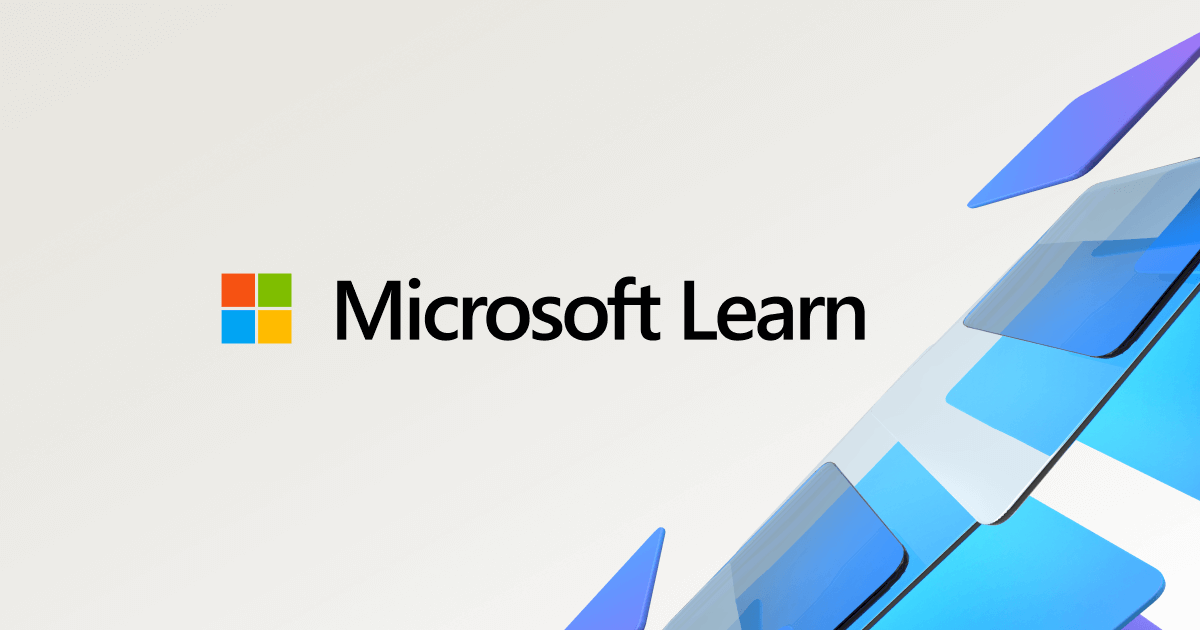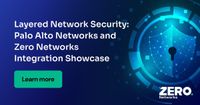Explore web search results related to this domain and discover relevant information.
Hey, so as of yestarday, 10/20/19, for some reason task manager decided to stop showing network utilization, and keep it at 0% for everything. I checked the network details in the performance tab for network, and here is what it looks like. I have a…
Hey, so as of yestarday, 10/20/19, for some reason task manager decided to stop showing network utilization, and keep it at 0% for everything. I checked the network details in the performance tab for network, and here is what it looks like. I have a wireless connection, and it has never acted up until now.Please make sure you do not have Virtualbox Bridged Networking Driver.If you have a Bridged Network to communicate between the Virtual PC (If you have a virtual PC software) task manager may not show network usage traffic.

Zero Networks delivers automated microsegmentation, securing assets on-prem, in the cloud, and OT/IoT. Deploy in 30 days with set-and-forget simplicity.
Divide your network into smaller, isolated micro-segments via automated, accurate security policies. Minimize the blast radius of an attack by blocking lateral movement and preventing ransomware.Connect remote employees and third parties to the network with zero trust principles and maximum performance. Leave no open ports for attackers to exploit."Zero Networks is a game changer."When I first saw Zero Networks, I walked away saying, this is too good to be true.


By the time Network Zero was officially created as a website in 1999, Harrison had gained a library of over 74 videos, all with bizarre subjects impossible to create with modern FX technology. The Secret Frequency had spread from cable access to the World Wide Web, with contacts from Alaska to New Delhi. Since the Net 2.0 ...
By the time Network Zero was officially created as a website in 1999, Harrison had gained a library of over 74 videos, all with bizarre subjects impossible to create with modern FX technology. The Secret Frequency had spread from cable access to the World Wide Web, with contacts from Alaska to New Delhi. Since the Net 2.0 revolution, easily portable cameras on phones, and MP3 players mean that members can upload any footage they get from nearly anywhere in the world.Network Zero is a compact of hunters made up of contacts through an Internet network who do their best to use the media to unveil the truth about the mysterious creatures of the night. On September 22, 1991, an amateur filmmaker named Jim Harrison broadcast three short films he had gotten anonymously showing footage of what appeared to be special effects impossible to make with the decade's current technology.Members gain a reputation from the videos they post or their ability to analyze the film in question. Thanks to their highly decentralized nature, Network Zero members can have a wide variety of options open to them, from supplying hunter cells with information to actively embedding themselves with other hunters to gather the best footage.

The Army released an update to its unified network plan, emphasizing the integration of zero-trust cybersecurity principles and streamlining the transfer of data to better connect warfighters.
As with command posts, the network and data must be agile, adaptable, and able to rapidly move to the point of need even in a denied, disrupted, intermittent, and limited bandwidth (DDIL) environment. Whereas past network strategies homed in on perimeter defense and hardware, the AUNP 2.0 is focused on common principles and standards to centrally deliver and manage the network and data.”Network modernization is a top priority for service leadership. The deputy chief of staff, G-6, trumpeted the unveiling of Army Unified Network Plan 2.0 in a LinkedIn post Tuesday.“AUNP 2.0 is new guidance on how the warfighter actually approaches, accelerates and operationalizes the unified network across the board,” Lt. Gen. Jeth Rey said in a statement. “It’s going to enable multi-domain operations and chart the roadmap of where we’re going for the unified network by 2027.“Since then, a confluence of emerging technologies and events has transformed the world into a multidomain, persistently contested information environment that demands a far more data-centric approach to harness the power of the Army Network to fight and win,” officials wrote in version 2.0.

Learn how Palo Alto Networks and Zero Networks deliver a unified solution for advanced network security by combining effortless microsegmentation and next-gen firewalls.
As cyberattacks rise and threats grow more sophisticated, nine out of ten organizations are turning to Zero Trust to boost security posture. But achieving Zero Trust requires advanced network security controls which have historically been difficult to implement at scale, requiring extensive manual effort and risking operational disruption.By combining Palo Alto’s Next-Gen Firewalls (NGFW) with Zero’s effortless microsegmentation, the integration enables granular critical asset control and advanced network security without added complexity.Microsegmentation contains threats once they're inside the network by immediately blocking lateral movement for East-West protection. NGFWs deliver strong perimeter defense and threat prevention, enhancing North-South protection.The integration of Palo Alto Networks’ NGFWs with Zero Networks’ agentless microsegmentation allows Zero to automatically discover, tag, and group network assets into shared dynamic address groups, synchronizing with Palo Alto for precise Layer 7 inspection, application identification, and data loss prevention (DLP).

Sometimes the network mask is also represented in the dotted decimal notation. To get the dotted decimal notation of the network mask, write the first n bits in the 32 bits as 1, and the remaining trailing bits as 0. Then, convert the resultant 32-bit number into the dotted decimal notation.
The network identifier can also be derived by masking the IP address with the network mask in dotted decimal notation. To mask the IP address with the subnet mask, just do a logical AND operation bit by bit for 32bits.Note that a logical AND between a binary1and binary x is x itself, and the result of the AND operation between a binary 0 and a binary x is always 0.Therefore, if a network has a mask of /n, the first n bits of the IP address are the network bits. The remaining (32-n) bits out of the 32 bits of the IPv4 address represent the host part of the address. Since the IP addresses are unique, in a subnet the maximum number of host addresses is 2(32-n). The first and last addresses of the range have a special purpose. The first address will be where all the host bits are 0 and, as we discussed earlier, this number represents the network identifier for the network.If the highest order bit was 0, the address was a class A address. If the highest order 2 bits were 10, the address was a class B address, and if the highest order 3 bits were 110, it was a class C address. Similarly, the highest order 4 bits for class D and class E addresses were 1110 and 1111 respectively. The rationale was based on the fact that there would be large, medium, and small networks, and hence three different classes of address, namely A, B, and C, were devised accordingly.Accordingly, 8 bits were reserved in a class A address for the network bits in a class A address, and the remaining 32 bits were for hosts. Since the first bit was already set to 0, this meant that there could be 128 such networks (2(8-1)), and each network could have up to 224 - 2 hosts each.

Zero Networks is the pioneer of plug-and-play microsegmentation that blocks ransomware and lateral movement attacks – and implements in 30 days.
Unlike legacy vendors who rely on manual policy creation and tagging, Zero Networks divides networks into isolated segments via highly accurate, automated rule creation with set-and-forget maintenance that saves 86% on security OpEx.The full Zero Networks platform also includes advanced Identity Segmentation and Secure Remote Access solutions that provide zero trust capabilities that help organizations exceed compliance requirements, earn chart-topping audit scores, and pass every pen test.
We cannot provide a description for this page right now

Segment your network effortlessly with Zero Networks—an automated, agentless platform that blocks lateral movement and secures every asset. Book a demo today! - United States
Excessive permissions and open access create the perfect environment for ransomware to spread and attackers to move freely. Networks were designed for connectivity, not security, and traditional segmentation solutions only add complexity, cost and maintenance headaches—leaving IT teams drowning in manual work while threats slip through the cracks.One breach can take down everything, cyber insurance premiums soar and your team stays stuck in firefighting mode instead of focusing on innovation. Security shouldn’t be this hard—but with Zero Networks, it doesn’t have to be.Securing your network shouldn’t be complex or costly.With Zero Networks, you get effortless, automated protection—without agents, disruptions or endless maintenance.
Major implementations of zeroconf networks include Apple’s Bonjour, Avahi, Windows CE 5.0, Jini and Zeroconf, a stand-alone package based on Simple IPv4LL.
This definition explains the meaning of Zero-Configuration Network and why it matters.A zero-configuration network is an IP network that is configured without using any manual configuration or configuration servers. This setup allows someone without networking expertise to connect computers, printers and other network devices and receive automatic network functionality.A zero-configuration network is usually employed for home and small business network setup, where the security risk is low and it is difficult or impossible to set up a normal IP network. Common uses are for short-notice meetings or small conferences.A zero-configuration network is also known as a zeroconf network or sometimes just zeroconf.
ZERO Network is an Ethereum Layer 2 network with Free transactions in Zerion Wallet. Based on ZK Stack and developed by Zerion.
Combining ZERѲ Network with Zerion creates the smoothest crypto experience possible.

I have been facing this issue that the Task manager is always showing the Network utilization percentage as 0% even though I'm using it, this problem starts some days before only before that it wor...
I have been facing this issue that the Task manager is always showing the Network utilization percentage as 0% even though I'm using it, this problem starts some days before only before that it worked well I don't know what happened, Some one please help me to fix this issue, I have attached the snapshot of my problem.Downloading something from WWW will most often not affect your local network adapter utilizations, e.g. you have a 25 Mbit/s internet connection but your PC network adapter has negotiated a 2.5 Gbit/s (=2560 Mbit/s) link speed with your router (→ 0.97% usage)If you wish to see network usage by process, use Admin Tools, Resource Monitor and network usage shows up there. What I report above is true for Windows 11 (all machines) and Windows 10 (VM). ... Find the answer to your question by asking. Ask question ... See similar questions with these tags. ... 0 Why is my computer slow (usually on startup) even though Task Manager doesn't show anything terrible?Search for Task Manager, Process Tab, Network column. All the posts show and say the values are 0.

Hi, I have a /24 routed to my server and I'm wondering if there's anything wrong with configuring the .0 IP on the host and using that as a gateway…
I have a /24 routed to my server and I'm wondering if there's anything wrong with configuring the .0 IP on the host and using that as a gateway for my VMs (routed setup). So far I mostly saw providers using .1 for that Share ... On any network range, there's always a host address at the beginning and a broadcast address at the end for that network.Preferly first verify with an ARP Whois if the IP is in use but if not having the gateway in the middle bring a higher risk of IP collissions since the "standard" is to use the first or last IP-addresses for the gateways out of this current network. ... .0 can be a valid host address, but NOT on a /24.For a network that size, it's the network address and is not available for host addressing ... Thank you, to give it a bit more context, I'm currently writing a script that automates the IP assignment for my VMs. It should be able to support smaller subnets like e.g. a /29 but also /24 or larger. So far I always reserved the first IP to be configured on the host and used as a gateway. That works fine with smaller subnets but on a /24 that would be IP .0.Some treat /0 like the broadcast, so all devices will answer, some just drop the packet as illegal. As such, using the broadcast and subnet addresses for end systems in not recommended. Notice there is one xception depending ob the ip implementaution: point to point links using /31 networks.

18 votes, 37 comments. Boss has a call lined up with them next week about a possible implementation. None of us have ever heard of them before, and…
Enterprise Networking Design, Support, and Discussion. Enterprise Networking -- Routers, switches, wireless, and firewalls. Cisco, Juniper, Arista, Fortinet, and more are welcome. Members Online · upvotes · · comments · Ask /r/netsec: Have any of you sold a 0day to ZDI/vulnerability markets?The fact that you wanted MFA on Windows Servers (assumping you mean login) tells me that you and your group were not up to speed on what the product actually does. Why would you look to a microsegmentation offering for Windows Server MFA? Your MFA should lie in Duo, Okta, PingID etc. and then if you want microsegmentation w/ JIT MFA then Zero Networks will fit that use case and therefore also provide an element of PAM.I'd have never gotten to a PoC of Zero Networks if I were looking for MFA. Your post and details are vague so I am assuming. ZN are doing some cool things but the use cases have to be there. As an Cybersecurity Architect, I ran a ZN PoC for a large company and was impressed considering the low barrier to entry into microseg/pam is there with ZN.Nile has microseg working with no config required. It's done through pre=programmed automation. Caveat being you are now replacing your existing LAN/WLAN hardware and software. The founder is John Chambers . https://nilesecure.com/solutions/network-security


In networking, an IP address such as `127. 0. 0. 1` and `0. 0. 0. 0 are fundamental to controlling how data is exchanged between instrumentation and networks. Although both may seem rather similar because they work with configurations of the network, they are actually very different.
In a computer network that uses the Internet Protocol for communication, an IP address (Internet Protocol address) is a numerical label, 192.0.2.1. Two functions of an IP address are to identify hosts and to address locations. According to Internet Protocol version 4 (IPv4), IP addresses are 32-bit numbers.The IP address 127.0.0.1, also called loopback, is exclusively for localhost use. It is possible for computers to communicate with each other over an IP address, but this address cannot be used by computers to communicate with one another. A chance exists that the private IP address 192.168.1.115 is assigned to your computer so that it can connect to a router or networked device.A computer still has an alias of 127.0.0.1 in networking terms. Unlike loopback addresses, IP addresses are the connection between your computer and the network, not the connection between the computer and the loopback address.As an example: The web server on a particular operating system may declare 127.0.0.1 as the local hostname, so the pages can be run locally before they are deployed. IP addresses are always attached to TCP/IP application software messages. It can reduce network security by eliminating any loopback IP addresses from incoming messages on routers and other gateways.

This configuration provides up to 256 IP addresses (192.168.1.0 through 192.168.1.255). If you need to create smaller networks within this range, you can change the subnet mask.
IP Subnet Zero refers to the first subnet obtained from dividing a larger network into smaller subnets. It is the subnet where all subnet bits are set to 0.To understand IP Subnet Zero, let’s first look at how subnetting works. Consider an IP network with a standard class C address: 192.168.1.0 with a default subnet mask of 255.255.255.0.RFC 950 (1985) initially discouraged using Subnet Zero to avoid confusion between the network address (192.168.1.0) and the subnet itself.IP Subnet Zero is the first subnet that results from dividing a larger network into smaller segments, or subnets. Historically, this subnet was often not used due to concerns about network confusion, but it is commonly used today to maximize IP address utilization.
Automatically segment your network and identities in 30 days with microsegmentation. Enhance security and enable secure remote access with Zero Networks.
Divide your network into smaller, isolated micro-segments via automated, accurate security policies. Minimize the blast radius of an attack by blocking lateral movement and preventing ransomware."Zero Networks is a game changer."When I first saw Zero Networks, I walked away saying, this is too good to be true."Zero Networks has become a core component of our security stack.


TCP/UDP Port 0 doesn't officially exist. It's a reserved system port in TCP/IP networking, used by programmers (or network attackers).
An MIT graduate who brings years of technical experience to articles on SEO, computers, and wireless networking. ... Jerrick Leger is a CompTIA-certified IT Specialist with more than 10 years' experience in technical support and IT fields. He is also a systems administrator for an IT firm in Texas serving small businesses. ... Port 0 carries special significance in network programming, particularly in the Unix OS when it comes to socket programming where the port is used to request system-allocated, dynamic ports.Unlike most port numbers, port 0 is a reserved port in TCP/IP networking, meaning that it should not be used in TCP or UDP messages. Network ports in TCP and UDP range from number zero up to 65535. Port numbers in the range between zero and 1023 are defined as non-ephemeral ports, system ports, or well-known ports.The Internet Assigned Numbers Authority (IANA) maintains an official listing of the intended usage of these port numbers on the internet, and system port 0 is not to be used. ... Configuring a new network socket connection requires that one port number be allocated on both the source and destination sides.To allocate its source port number, applications call TCP/IP network functions like bind() to request one. The application can supply a fixed (hard-coded) number to bind() if they prefer to request a specific number, but such a request can fail because another application running on the system may currently be using it. Alternatively, it can provide port 0 to bind() as its connection parameter.
Whenever I start downloading a game or just updating it. My task manager always says 0% network and never downloads it or downloads it at a very slow speed. A few weeks ago it was downloading at 25mb/s and sometimes even 50mb/s but now its only getting a…
Whenever I start downloading a game or just updating it. My task manager always says 0% network and never downloads it or downloads it at a very slow speed. A few weeks ago it was downloading at 25mb/s and sometimes even 50mb/s but now its only getting a few kb/s and takes forever to download.I've made sure to close all my apps. I've reset my router multiple times and even reset my network data on my computer.

On some networks, there is a central authority that assigns these addresses as new devices are added. Mechanisms were introduced to handle this task automatically, and both IPv4 and IPv6 now include systems for address autoconfiguration, which allows a device to determine a safe address to use through simple mechanisms. For link-local addressing, IPv4 uses the special block 169.254.0...
On some networks, there is a central authority that assigns these addresses as new devices are added. Mechanisms were introduced to handle this task automatically, and both IPv4 and IPv6 now include systems for address autoconfiguration, which allows a device to determine a safe address to use through simple mechanisms. For link-local addressing, IPv4 uses the special block 169.254.0.0/16, while IPv6 hosts use the prefix fe80::/10.Microsoft Windows CE 5.0 includes Microsoft's own implementation of LLMNR. Systemd implements both mDNS and LLMNR in systemd-resolved. Where no DHCP server is available to assign a host an IP address, the host can select its own link-local address. Using a link-local address, hosts can communicate over this link but only locally; Access to other networks and the Internet is not possible.When an mDNS client needs to resolve a local hostname to an IP address, it sends a DNS request for that name to the well-known multicast address; the computer with the corresponding A/AAAA record replies with its IP address. The mDNS multicast address is 224.0.0.251 for IPv4 and ff02::fb for IPv6 link-local addressing.Zero-configuration networking (zeroconf) is a set of technologies that automatically creates a usable computer network based on the Internet Protocol Suite (TCP/IP) when computers or network peripherals are interconnected. It does not require manual operator intervention or special configuration servers.Without zeroconf, a network administrator must set up network services, such as Dynamic Host Configuration Protocol (DHCP) and Domain Name System (DNS), or configure each computer's network settings manually.


